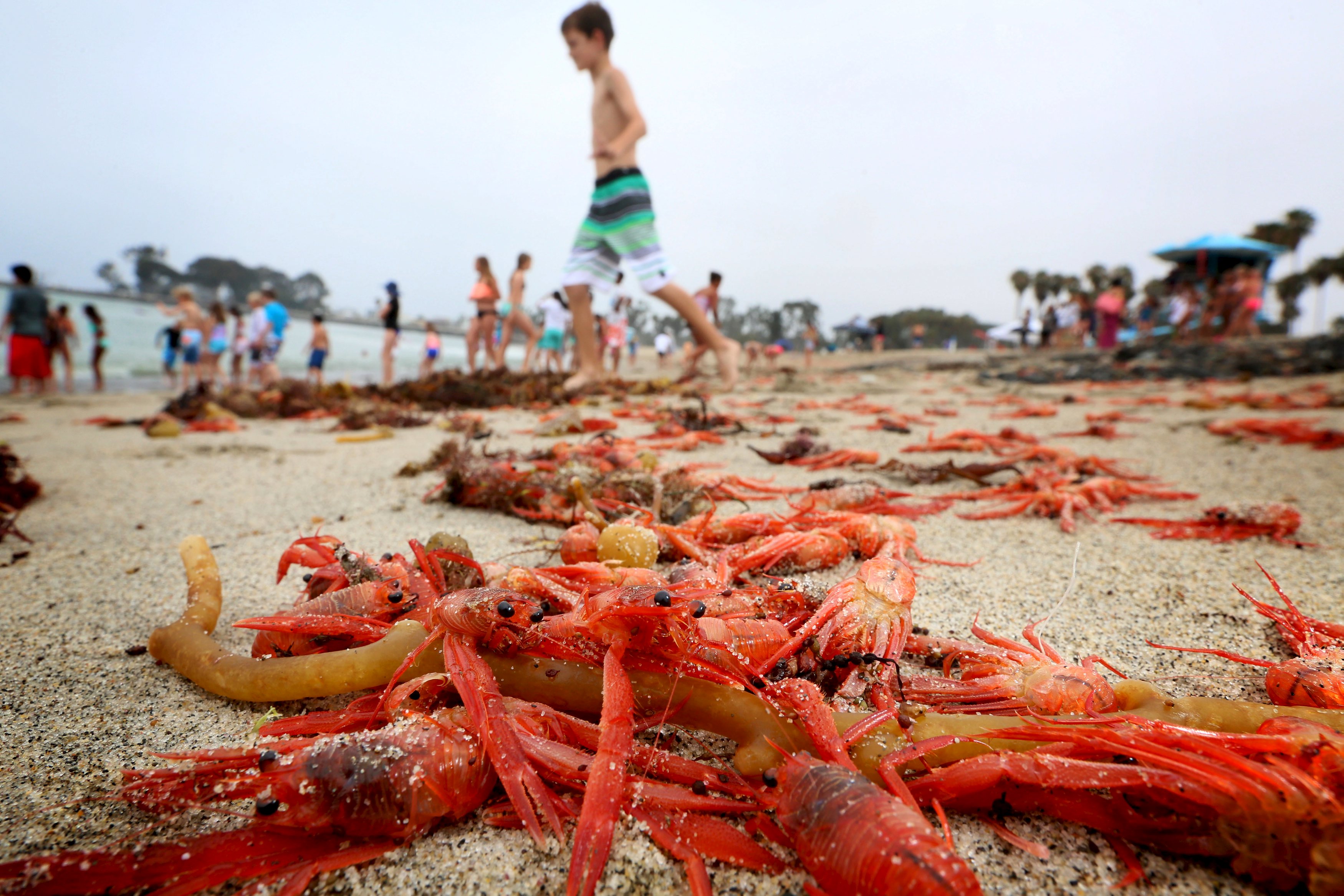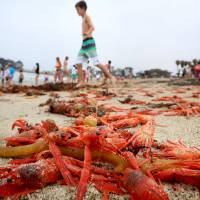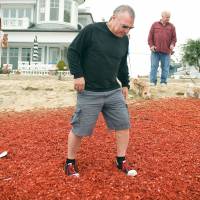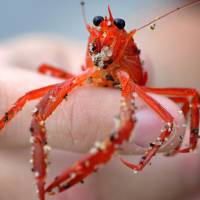Hundreds of thousands of tiny crabs have been washing up on Southern California beaches, marring the sandy coastline with streaks of red, as warm ocean currents carry them farther north and closer to shore than usual, officials said on Wednesday.
The red tuna crabs have been dying in hordes on beaches from San Diego to Orange County, although some have been washed back out to sea alive.
Such strandings take place periodically and are not necessarily a threat to the species, according to Linsey Sala, collection manager for the Pelagic Invertebrates Collection at the University of California, San Diego's Scripps Institution of Oceanography,
"This is definitely a warm-water indicator," Sala said. "Whether it's directly related to El Nino or other oceanographic conditions is not certain."
Scripps has cautioned people not to eat the crabs because the creatures may have ingested toxin-producing phytoplankton.
Scientists have noted the presence of a toxic algae bloom in the Pacific Ocean stretching from California north to Washington state that might be the largest ever detected off the U.S. West Coast. Sala could not say if the crab strandings might be related to the algae bloom.
The crabs are unusual in that they can spend most if not all of their lives free swimming in the water column rather than close to the bottom, although larger adults will make excursions to the seafloor, Sala said.
The plankton-eating crabs, native to the waters of the Gulf of California, Baja California and the California Current, are 1 to 3 inches (2.5-7.6 cm) long and resemble tiny lobsters. Their scientific name is Pleuroncodes planipes and they also are known as pelagic red crabs.
"They are mostly grazers in the upper 200 meters of the ocean," Sala said. "Because they can swim in the water column, they can be transported by strong currents."
Warmer water brought them north and ashore, Sala said.





















With your current subscription plan you can comment on stories. However, before writing your first comment, please create a display name in the Profile section of your subscriber account page.